Up Next

Grand Prix Drivers’ Association chairman George Russell has called for significant improvements to be made to what he describes as Formula 1’s “pointless” full wet tyre – something Pirelli admits needs to be worked on.
As the Belgian Grand Prix sprint formation lap started under the safety car, running the wet tyres was mandatory until the safety car pulled in.
When that happened half of the field pitted to get rid of the wets, with the other half pitting to do so at the end of the first racing lap as all teams opted to bring one car in and leave the other out.
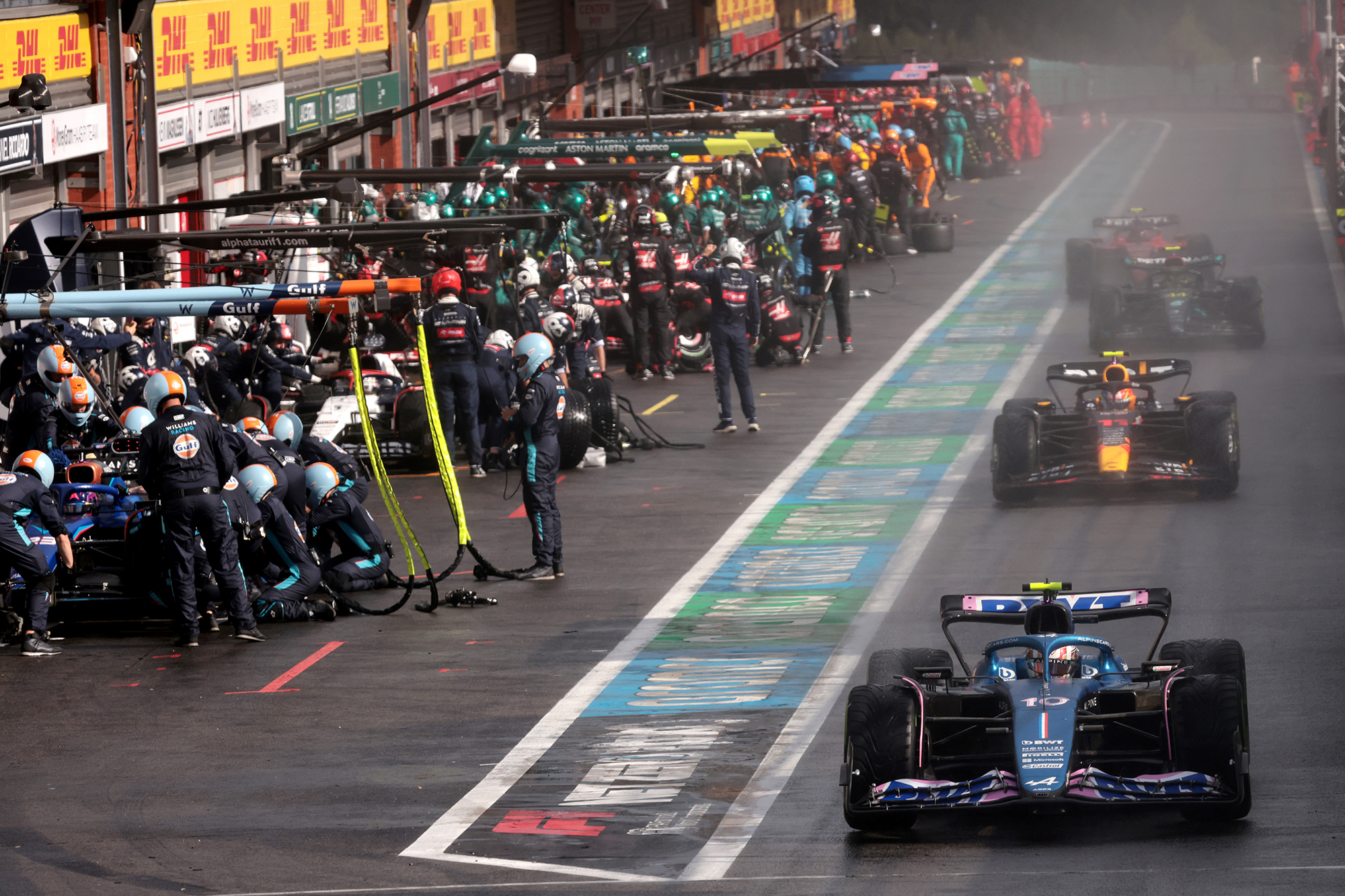
This was driven by the need to get onto the intermediate Pirellis as quickly as possible given the track conditions and the significant performance step between them and the wets.
Colloquially, the wet tyre is often jokingly referred to as the “safety-car tyre” given drivers usually want to move off it at the earliest opportunity.
Mercedes driver Russell, who opted to pit at the end of the first racing lap after the safety car pulled in, finished eighth after passing Daniel Ricciardo with three laps remaining and led criticism of the wet tyres.
“The extreme [wet] tyre is a pretty pointless tyre,” said Russell when asked by The Race about the wet Pirellis.
“It’s really, really bad. It’s probably six, seven seconds a lap slower than the intermediate.
“The only reason you’d ever want the extreme wet is because you’re going to aquaplane on an intermediate, so that needs to be substantially improved.

“The aquaplaning with fairly little water is really substantial. I remember watching the old onboard videos of 2007 with [Felipe] Massa and [Robert] Kubica at Fuji [during the Japanese Grand Prix]. There was so much water but they were still pushing flat out.
“I remember doing test days here in Formula 3 and Formula Renault on Michelin, Hankook and aquaplaning wasn’t really a thing.
“I appreciate we’re doing well over 200mph and it’s not straightforward. But there needs to be some significant improvements.”
Gary Anderson’s suggestion
In one of his expert comments for The Race Live Hub‘s coverage of Belgian Grand Prix Saturday, Gary Anderson suggested this solution:
“If these wet tyres are so bad, surely it’s time to think about having two levels of what we know as intermediates?
“If the land-to-sea ratio of the current inter was altered, say 10% less open tread for the inter and 20% more open tread for a new wet, so basically in both directions, wouldn’t that be a simple solution?”
Charles Leclerc, who finished three places ahead of Russell in fifth, agreed the wets need to be improved.
He said the wets should be improved to the point than using them – not inters – was the norm in the rain.
“There’s some work that needs to be done there because we’ve got extreme [wet] tyres that are really slow, but are really good for aquaplaning but we never drive in those conditions because of visibility, so whenever it’s driveable we need to go on inters,” said Leclerc.
“It’s quite tricky at the moment. I think the extreme should be faster and closer to the inters, so we run more on the extreme than the inters.”
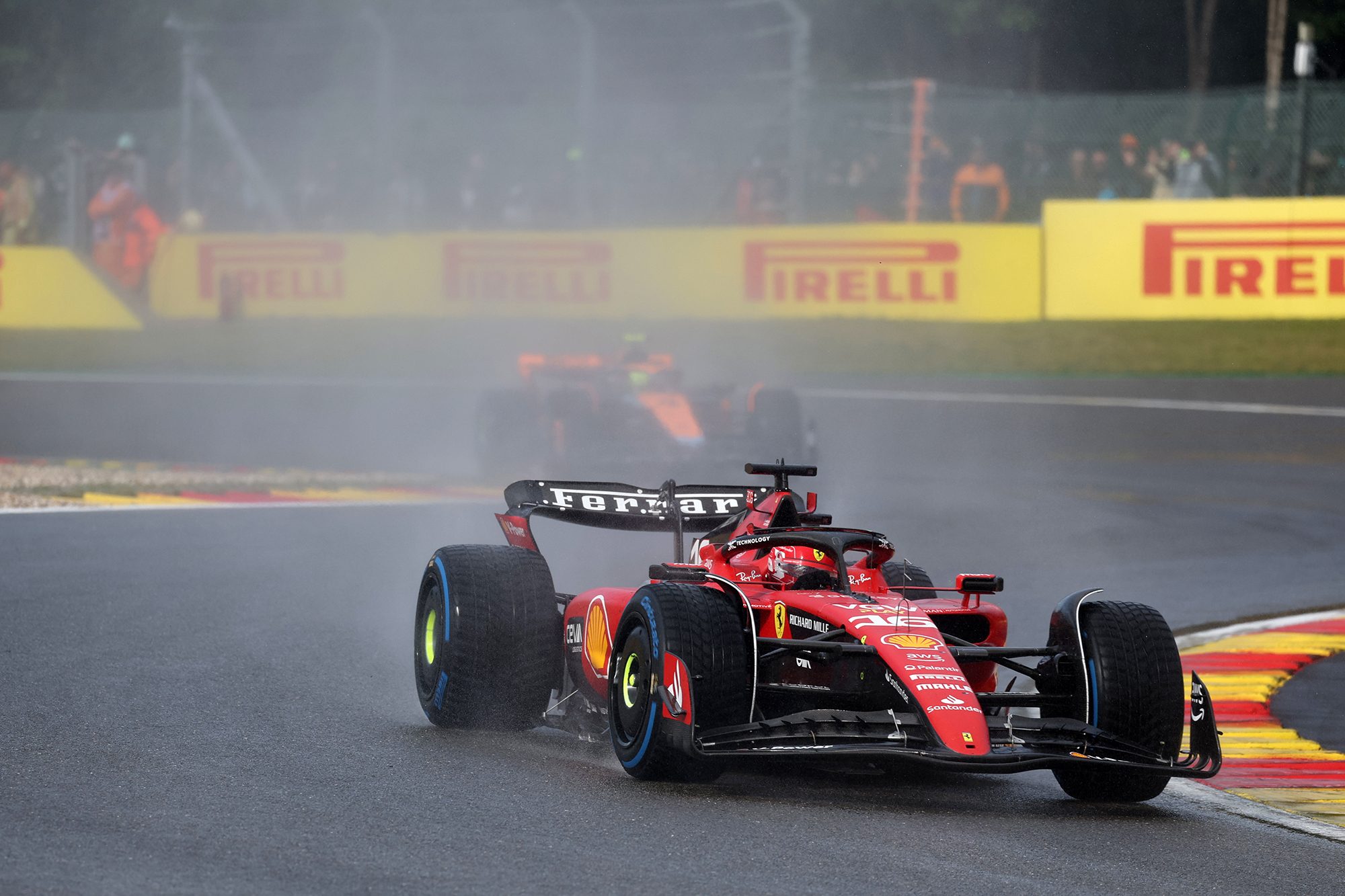
Fernando Alonso was another to question the wets, complaining that “even behind the safety car they were overheating”.
When asked whether the rules should allow intermediates to be used when behind the safety car for the formation laps, Alonso said it was possible but suggested there were other potential solutions.
“I guess so in terms of grip, but the visibility is very low,” said Alonso. “It’s a problem that seems to be repeated here in Spa and maybe we need to think of other solutions.”
Pirelli has already set improving its wet tyres as an objective. Some gains were made with the wets heading into 2023, while in Monaco two months ago it also introduced wets that do not require tyre blankets. Blanketless intermediates will be introduced next year.
Pirelli F1 boss Mario Isola admits work needs to be done on the performance of the wets. This would allow the wets to be run in a broader range of conditions and, as drivers have requested, mean they can be used on a track dry enough for intermediates without losing significant performance. This would make them a more raceable tyre, rather than one to be ditched at the earliest opportunity.
Speaking on Friday evening, Isola explained that the characteristics of the wets mean they are primarily used when there is significant standing water. Once that standing water has eased, even if there are what he called rivers running across the track, it’s possible to switch to intermediates.
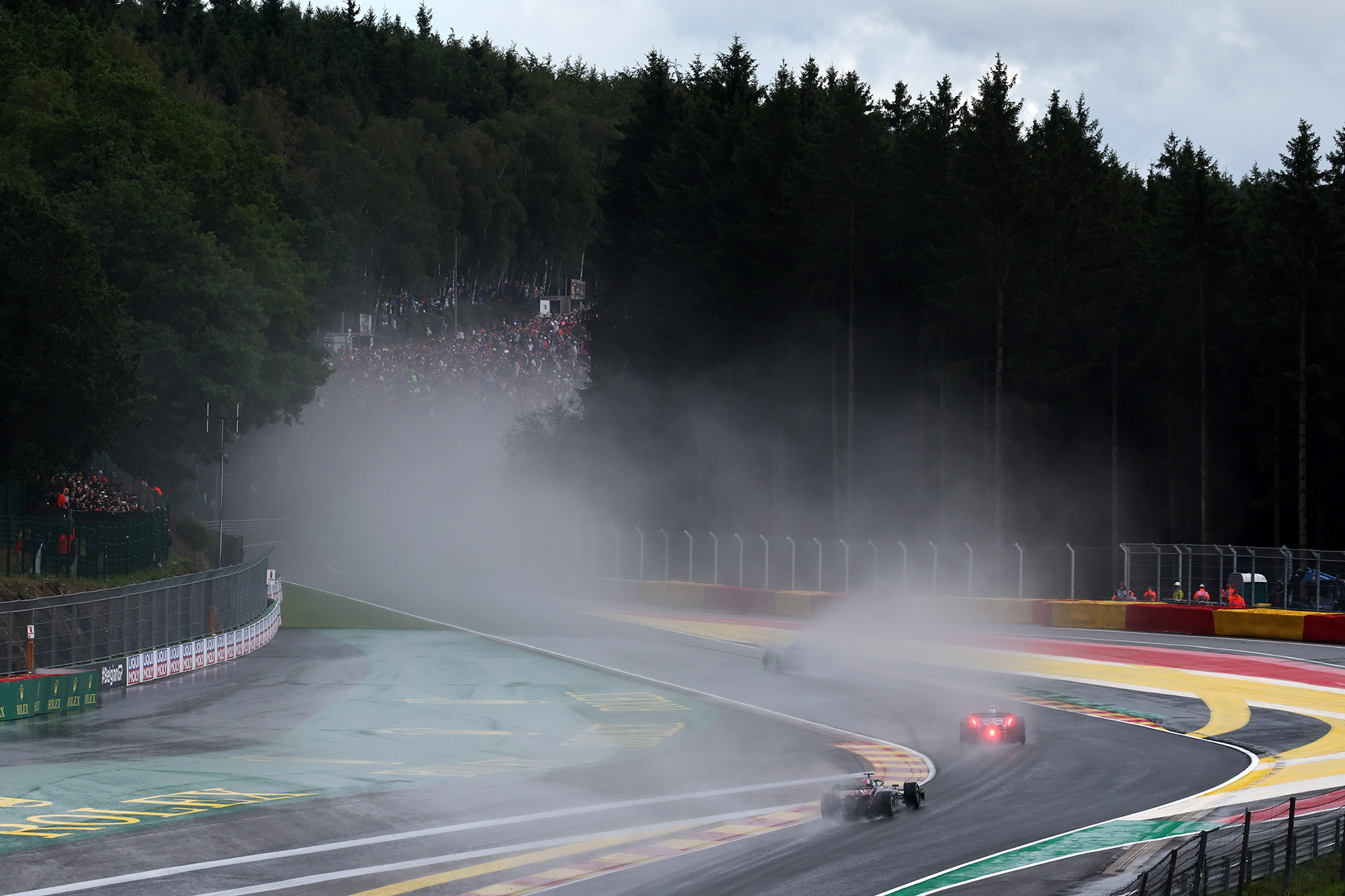
“We should work on the wet for the future in order to improve the performance further,” said Isola.
“We already found an improvement with this wet compared to the old one, but we still miss a little bit of performance to have the right crossover with the intermediate.
“The circuit is so long that you have sectors or corners with different levels of water. You have some rivers because here it’s all uphill, downhill and there are very few places where you have proper standing water in this condition. If you can go through the rivers, then it’s better to use the intermediate because the performance is better.
“We’re now collecting all this data to analyse because it’s useful for us to understand how the two different tyres work for developing the tyres in the future.”
World champion Max Verstappen was another high-profile driver to highlight the wets’ limitations.
“We really quickly at the moment want to go from an extreme to an inter, even when there’s a bit of standing water around,” said Verstappen.
“The extreme needs to work in a better window so we don’t need to always go straight to an inter.
“But that’s a different problem because of course visibility is probably the most important, because if you don’t see where you’re going it’s not what you want.”
Verstappen is right to differentiate the question of wet tyre performance from the one of visibility, which drivers found challenging in the Spa sprint race. As the wets and intermediates are designed to cut through and clear water, it’s inevitable that significant spray will be thrown up.
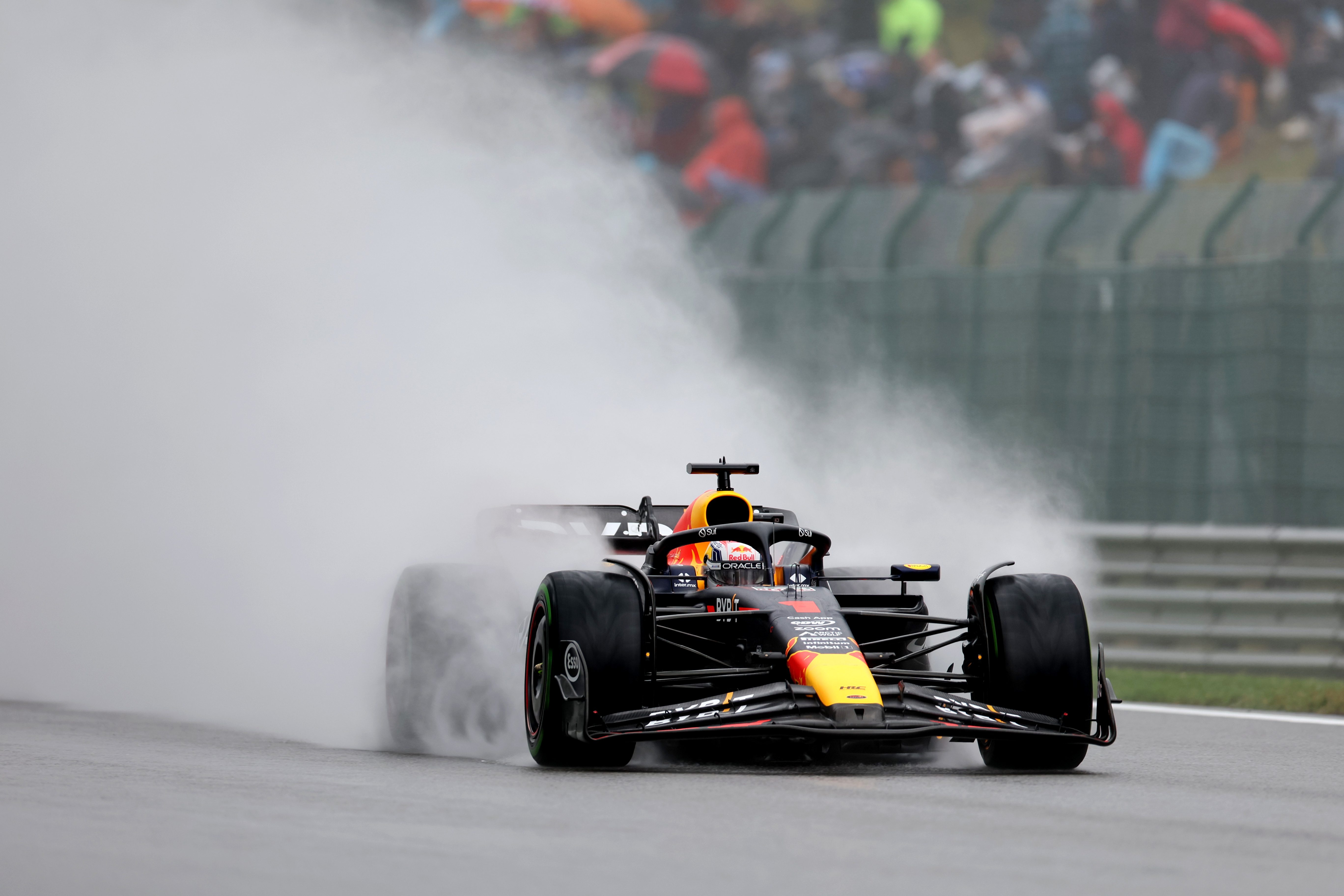
The drivers believe that the spray problem has got worse as F1 cars have evolved, particularly through the introduction of wider tyres and cars in 2017 and the subsequent switch to ground-effect regulations last year.
“I’ve been doing this sport a while now and I don’t remember it like this,” said Ricciardo of the visibility.
“Obviously the last few years it’s been bad but five, 10 years ago we raced in these conditions. I know the cars are bigger and the tyres and all that.
“We want to race because the weather is also fun but we really don’t see anything above probably fourth gear.”
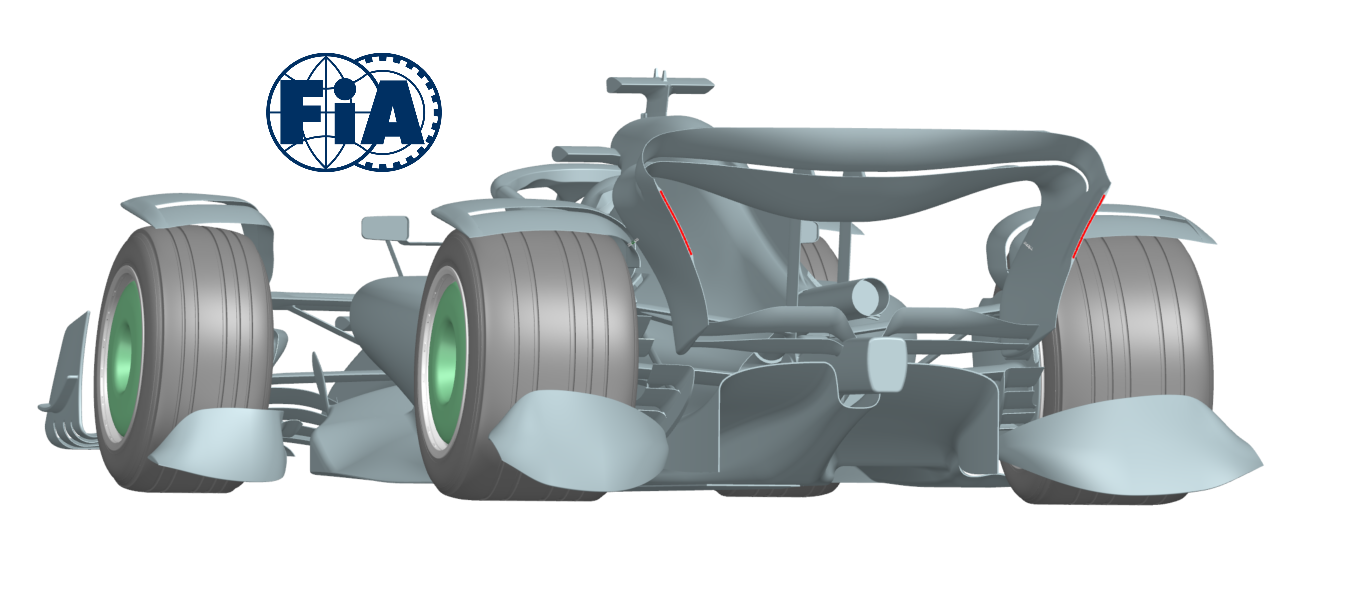
The FIA is also working on a spray guard project it hopes can lead to the introduction of a bolt-on, standard-specification ‘wet weather package’ (WWP) to be used only in extreme wet conditions.
A trial of the first prototype of these at Silverstone earlier this month made “no tangible difference” to the spray, according to the FIA’s Nikolas Tombazis, but the project continues with the objective of creating spray guards that reduce the spray by around 50%.






